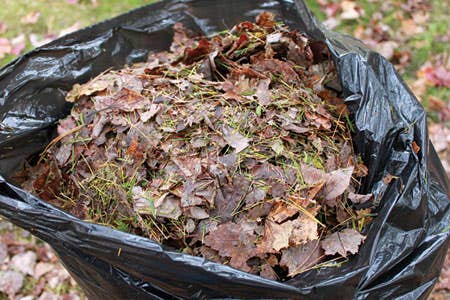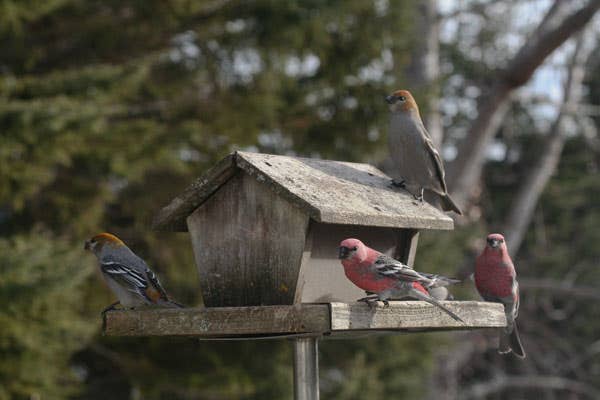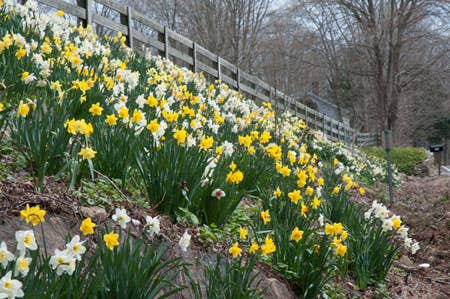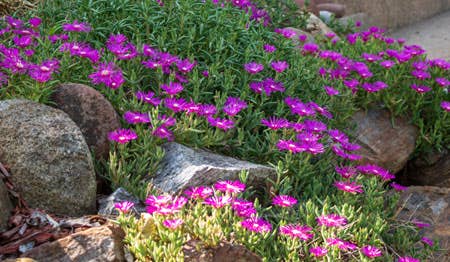Q&A with Bob Polomski 22
Extension Consumer Horticulturist, Clemson University Four Japanese plum trees came with my new home. This is my second year with them and I haven’t seen any fruit. What should I…
Extension Consumer Horticulturist, Clemson University
Four Japanese plum trees came with my new home. This is my second year with them and I haven't seen any fruit. What should I do? –F.R., East Windsor, NJ
Answer: Most Japanese plums (Prunus salicina) are self-infertile, meaning they are unable to set fruit if pollinated by their own pollen. If your four trees are all the same variety, you will need another compatible variety whose bloom time coincides with the trees you have. Plant a pollenizer within 100 yards of your trees. ‘Santa Rosa’ (early season), ‘Redheart’ (midseason), and ‘Wickson’ (late season) are good pollenizers for many Japanese plum varieties. In general, European plums (P. domestica) are self-fertile, although there is often an improvement in both yield and fruit quality with cross-pollination.
Your lack of fruit could also be the result of a late-spring freeze that killed the flowers. Japanese plums bloom earlier in the spring than European plums, and temperatures of 27°F will kill open flowers.
Finally, windy, rainy, and cold temperatures may have hampered the flight of honeybees and other insects, and thus prevented pollination.
I know that many annuals bloom all summer long, but are there hardy perennials that do as well? –R.L., Morton, PA
Answer: Provided you deadhead regularly and water during dry spells, you can expect to get several months of steady or intermittent bloom from the following sun lovers: Achillea millefolium ‘Fire King’ and ‘Apple-blossom’, A. filipendulina ‘Coronation Gold’, Anaphalis triplinervis (pearly everlasting), Aster xfrikartii ‘Monch’, Chrysogonum vir-ginianum ‘Mark Viette’ (green and gold), Ceratostigma plumbaginoides (leadwort), Coreopsis verticillata ‘Moonbeam’ and ‘Zagreb’, Echinacea purpurea ‘Magnus’ (purple coneflower), Gaura lindheimeri, Geranium sanguineum, Helenium autumnale ‘Red Army’, reblooming daylilies such as Hemero-callis ‘Stella de Oro’, ‘Happy Returns’, ‘Lemon Lollypop’, ‘Penny's Worth’, Hibiscus moscheutos (rose mallow), Rudbeckia fulgida ‘Goldsturm’, Perovskia atriplicifolia (Russian sage), Scabiosa ‘Butterfly Blue’, Salvia xsuperba (meadow sage), Sedum ‘Autumn Joy’, and Veronica longifolia ‘Sunny Border Blue’.
For shade, try growing Corydalis lutea, Dicentra eximia ‘Alba’ (fringed bleeding heart), and Dicentra formosa ‘Luxuriant’.
In my travels, I occasionally see trees whose limbs have been connected with cables. I'm interested in doing that to one of my own trees, which I'm afraid will come apart in a windstorm. Can you tell me more about the practice?—T.H., Mantua, OH
Answer: Cabling is an arboricultural practice intended to reduce the movement of one or more limbs. Galvanized steel cable, or some other corrosion-resistant link, is installed between one or more limbs and the trunk. Where there is a weak crotch between two leaders of equal size, a bolt or threaded rod is sometimes used to connect and reinforce the two sides, a practice known as bracing.
Cabling and bracing trees are not weekend, do-it-yourself sorts of projects. They are best left to professional, certified arborists. There are specific standards that must be met, in both the materials used and their installation.
Before cabling or bracing any tree, be sure that the tree is structurally sound and worth the expense of labor, supplies, and regular maintenance. Not all trees are worth saving, but the lives of many have been extended by timely action.
I have been told my eucalyptus tree has borers inside the trunk. Is there any way to kill them? –B.D., San Jose, CA
Answer: Eucalyptus longhorned borers, the larvae of longhorned beetles (Phoracantha semipunctata and P. recurva), are becoming a serious pest in California. They feed on living wood, girdling the cambium of the tree and often causing the tree to die within a matter of weeks.
Borers are difficult to control, because as soon as they hatch they begin tunneling through woody tissue, which puts them out of reach of most controls. The appearance of powdery sawdust mixed with insect excrement (known as frass) is often the first sign that borers are at work, although you may also be able to hear the scraping sounds of the borers feeding within a trunk or limb, even from several feet away.
The best defense against borers is to plant adapted species in the right location and water, fertilize, and prune them properly. Many of the eucalyptus trees in California are species that are native to the wetter regions of Australia, and the long summer droughts they experience in California predispose them to borer attack. Vigorously growing trees are also more likely to recover from attacks and survive. Trunks that have been injured by lawn mowers and weed trimmers, on the other hand, are more prone to infection.
Individual borers can sometimes be killed by poking a thin, sharp wire into their tunnel from the outside and impaling the larvae. Heavily infested limbs should be pruned and disposed of by burning, burying, or chipping to prevent the borers from completing their development.
I can't seem to produce a decent-looking ‘Better Boy’ tomato without it splitting open on the vine. What am I doing wrong? Am I growing the wrong tomato variety? –S.S., Midland, MI
Answer: Cracking is a physiological disorder that describes the splitting of the outer skin (epidermis) of the tomato fruit. Two kinds of cracks occur in tomatoes. Radial cracks are deep, V-shaped splits that begin at the stem end and radiate toward the blossom end. Circular cracks are a series of concentric rings that appear between the stem end and the shoulders of the fruit.
Tomato fruits crack in response to environmental conditions that encourage rapid fruit growth or expansion, such as wide fluctuations in moisture or temperature. For example, when the epidermis cells have “hardened” during a slow growth period, excess water encourages rapid growth that can cause the skin to split. Also, hot daytime and cool nighttime temperatures can result in expansion and contraction of the fruits, leading to the development of cracks. Finally, high nitrogen and low potassium levels have been linked to fruit cracking.
Some tomato varieties resist cracking better than others. Highly susceptible tomatoes develop cracks while the fruit is still green; crack-resistant varieties show no signs of stress in the green stage until they start turning red. Ripe tomatoes tend to develop circular cracks if they remain on the vine too long.
Cracking is affected by several genes, and because different genes control each type of crack, it is difficult to breed crack-resistant varieties. However, researchers have found that plum tomatoes and small, globular tomatoes such as ‘Marglobe’ and ‘Heinz’ are more resistant to cracking than cherries and large varieties such as your ‘Better Boy’. Other crack-resistant tomatoes include ‘Daybreak’, ‘Jet Star VF Hybrid’, ‘Pink Girl VFT Hybrid’, and ‘Monte Carlo VFN Hybrid’, ‘Mountain Fresh VF Hybrid’, ‘Mountain Spring VFF Hybrid’, and ‘Spitfire VFFA Hybrid’. H







